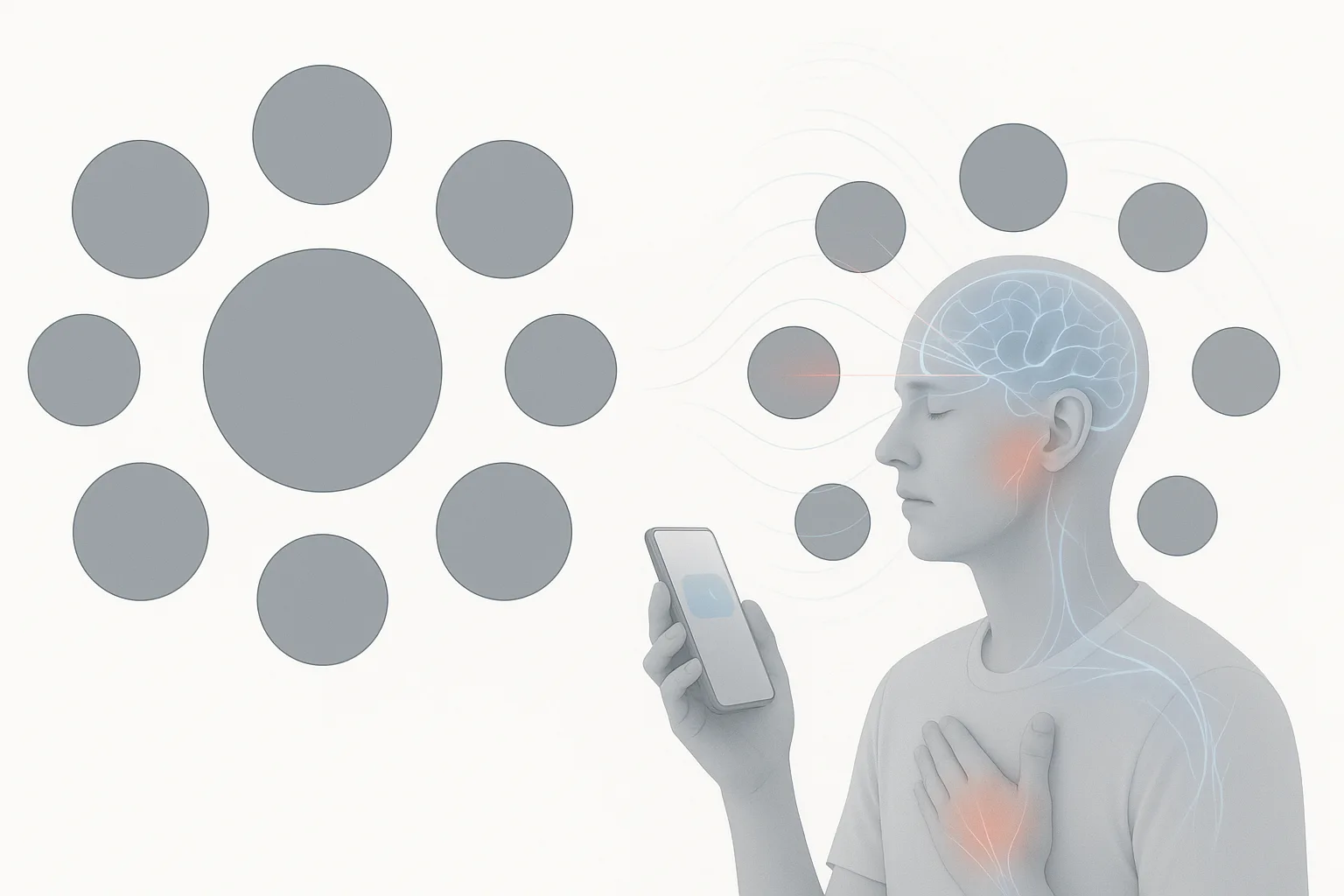The size context illusion test is one of the simplest and most powerful demonstrations of how your brain misjudges size. Even when two shapes are completely identical, your perception of them changes depending on what surrounds each one. This illusion shows that your brain does not measure size objectively. Instead, it compares objects to their context and builds relative interpretations rather than absolute ones.
Your visual system constantly evaluates contrast, surroundings, framing and proportion. Because of this, your brain can be tricked into seeing two identical shapes as different in scale. The size context illusion test exposes how quickly this distortion happens and how deeply your perception depends on comparison.
Let’s start the experiment.
Step 1 — Draw Two Identical Circles
Begin with a blank sheet of paper.
Draw:
- one small circle on the left
- the same exact circle on the right
Keep them as identical as possible.
Why this matters
These two circles will serve as your baseline.
Both are equal, and this equality is essential for the size context illusion test to work.
Step 2 — Surround the Left Circle With Larger Shapes
Around the left circle, draw shapes significantly larger than it:
- large squares
- wide circles
- long rectangles
- big triangles
Do not touch the main circle; just surround it.
What you’ll notice
Even before finishing the shapes, the left circle begins to look smaller.
This is the first sign of context affecting perception.
Step 3 — Surround the Right Circle With Smaller Shapes
Around the right circle, add:
- tiny dots
- small circles
- miniature squares
Keep all shapes noticeably smaller than the central circle.
Result
The right circle now appears larger, even though both circles are identical.
This is exactly what the size context illusion test is designed to reveal.
Step 4 — Cover One Side at a Time to Compare
Cover the right half of the paper with your hand.
Look only at the left circle with its large surrounding shapes.
Then switch — cover the left side and observe the right circle.
What happens
Each circle appears to change size based on which context you isolate.
The illusion becomes stronger when each circle is viewed independently.

Step 5 — Remove Surroundings to Reset Your Perception
Place another sheet of paper over the surrounding shapes, leaving only the two central circles visible.
What changes
Magically, both circles look identical again.
Removing context removes the illusion.
This step proves that your brain misjudged size, not your eyes.
Step 6 — Try the Illusion With Squares Instead of Circles
Repeat the experiment using:
- two identical squares
- two identical rectangles
- two identical triangles
Surround each shape again — one with larger shapes, the other with smaller ones.
Why this is important
The size context illusion test works with virtually any shape.
Your brain consistently relies on surrounding magnitude for scale judgments.
Step 7 — Use Letters to Create a Text-Based Illusion
Write the letter A twice:
- same font
- same size
- same distance apart
Surround one A with large letters and the other with small ones.
What you’ll notice
The A surrounded by larger letters looks smaller, even though both A’s are identical.
This verifies that the illusion works beyond geometric shapes.
Step 8 — Try the Everyday Object Variation
Find two identical objects such as:
- two coins
- two batteries
- two bottle caps
- two erasers
Place one object among larger items such as a notebook or phone.
Place the other among tiny objects like paper clips or earbuds.
Result
The same object appears different in size depending on its environment.
Your brain uses context constantly, even in daily life.
Step 9 — Photograph the Setup From Above
Take a photo of both objects from directly overhead.
What changes
In the photo, both objects look almost identical again.
Why?
Because the camera removes depth cues and surrounding scale references, flattening perception.
This reinforces the size context illusion test by stripping away misleading context.
Step 10 — What This Brain–Body Glitch Reveals About You
The size context illusion test exposes deep truths about how your brain interprets size:
1. You don’t see absolute size
You see relative comparisons.
2. Your brain uses surrounding shapes as reference points
Context influences scale judgments instantly.
3. Identical objects appear different
This happens even when you know the illusion exists.
4. Visual processing favors context over accuracy
Your brain prefers efficiency, not precision.
5. Advertisers and designers exploit this effect
Packaging, branding and layout frequently use relative-size illusions.
6. The illusion is a natural feature of perception
Your brain evolved to judge size quickly based on comparisons.
7. Reality is interpreted, not recorded
You see what your brain constructs — not what your eyes capture.
The size context illusion test is one of the clearest demonstrations of how flexible and error-prone visual perception can be.
Try the Next Brain–Body Glitch Experiment
If the size–context illusion revealed how your brain misjudges size, the next experiment shows how your brain misjudges brightness. You will see how identical shades look completely different depending on their surroundings.
Next recommended experiment:
The Contrast Illusion Test — Why the Same Color Looks Brighter or Darker Based on Background
